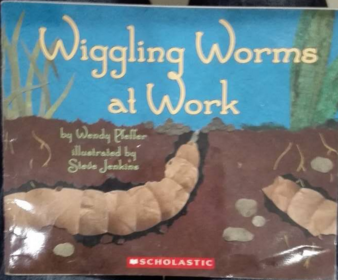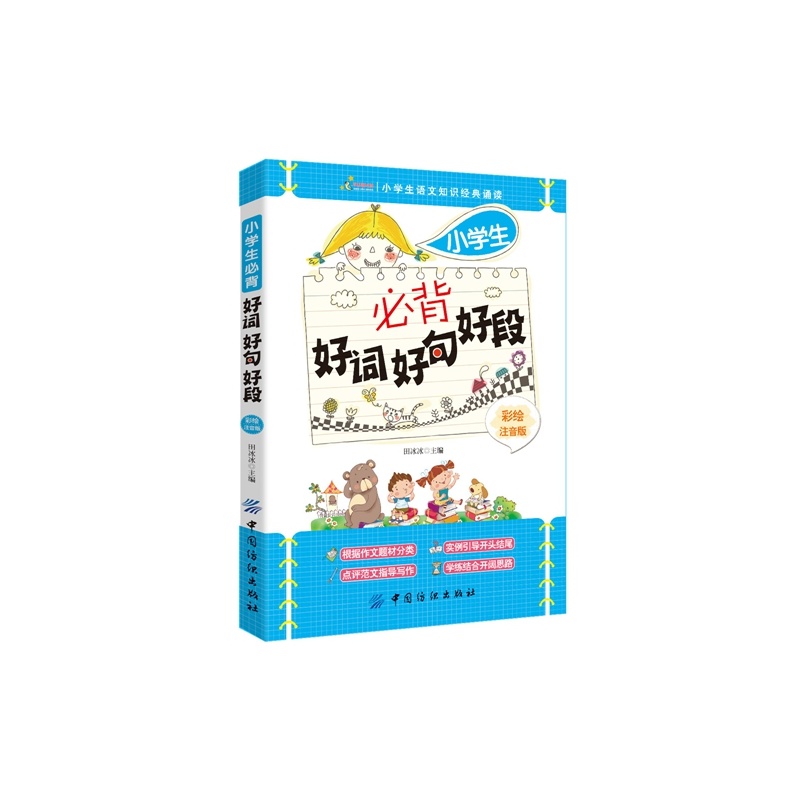-

-
Wiggling Worms at Work
书号:9780064451994
作者:HarperCollins
适合阅读年龄:4-7岁,7-10岁,10-14
出版社:HarperCollins Publishers
出版日期:2003-01-01
- 内容简介
From Booklist
K-Gr. 3. From the Let's-Read-and-Find-Out Science series, this book provides a good introduction to a familiar animal: the earthworm. Pfeffer discusses the worm's habits, anatomy, locomotion, food, and life cycles, as well as explaining the importance of castings and tunneling in maintaining soil richness, moisture, and aeration. The final two pages encourage children to explore earthworms on their own by closely observing a worm and a tunnel entrance and by planting seeds in ordinary soil and in soil enriched with worm castings. Though children may need to read or hear the text more than once to absorb all the information presented, the book offers a solid, interesting introduction to the subject. Jenkins' distinctive cut-paper collages illustrate the text with clarity and style. A good title for backyard scientists and a fine addition to primary-grade units on the subject. Carolyn Phelan
Copyright © American Library Association. All rights reserved
From School Library Journal
Kindergarten-Grade 3--This is a great book marred by a few unclear pictures. The well-organized text explains how worms improve the quality of soil and covers the basics about the animal's body structure, movement, diet, and reproduction. The writing is clear and engaging; in one instance, Pfeffer compares the segments on a worm's body to "the coils on a Slinky toy." Although the collage artwork is visually appealing, some of the images are a bit confusing. In one illustration accompanying the explanation of how a worm tunnels, the creature looks as if it has been chopped in two or torn up. In another, it looks as if it is decomposing. The book ends with suggestions for examining a worm in the field and a science-fair-type project using castings. Better choices include Kevin Holmes's Earthworms (Bridgestone, 1998), Michael Elsohn Ross's Wormology (Carolrhoda, 1996), and Bobbie Kalman's Squirmy Wormy Composters (Crabtree, 1992; o.p.).--Jean Lowery, Bishop Woods Elementary School, New Haven, CT
Copyright © Reed Business Information, a division of Reed Elsevier Inc. All rights reserved.- 书摘与插图
From Booklist
K-Gr. 3. From the Let's-Read-and-Find-Out Science series, this book provides a good introduction to a familiar animal: the earthworm. Pfeffer discusses the worm's habits, anatomy, locomotion, food, and life cycles, as well as explaining the importance of castings and tunneling in maintaining soil richness, moisture, and aeration. The final two pages encourage children to explore earthworms on their own by closely observing a worm and a tunnel entrance and by planting seeds in ordinary soil and in soil enriched with worm castings. Though children may need to read or hear the text more than once to absorb all the information presented, the book offers a solid, interesting introduction to the subject. Jenkins' distinctive cut-paper collages illustrate the text with clarity and style. A good title for backyard scientists and a fine addition to primary-grade units on the subject. Carolyn Phelan
Copyright © American Library Association. All rights reserved
From School Library Journal
Kindergarten-Grade 3--This is a great book marred by a few unclear pictures. The well-organized text explains how worms improve the quality of soil and covers the basics about the animal's body structure, movement, diet, and reproduction. The writing is clear and engaging; in one instance, Pfeffer compares the segments on a worm's body to "the coils on a Slinky toy." Although the collage artwork is visually appealing, some of the images are a bit confusing. In one illustration accompanying the explanation of how a worm tunnels, the creature looks as if it has been chopped in two or torn up. In another, it looks as if it is decomposing. The book ends with suggestions for examining a worm in the field and a science-fair-type project using castings. Better choices include Kevin Holmes's Earthworms (Bridgestone, 1998), Michael Elsohn Ross's Wormology (Carolrhoda, 1996), and Bobbie Kalman's Squirmy Wormy Composters (Crabtree, 1992; o.p.).--Jean Lowery, Bishop Woods Elementary School, New Haven, CT
Copyright © Reed Business Information, a division of Reed Elsevier Inc. All rights reserved.







